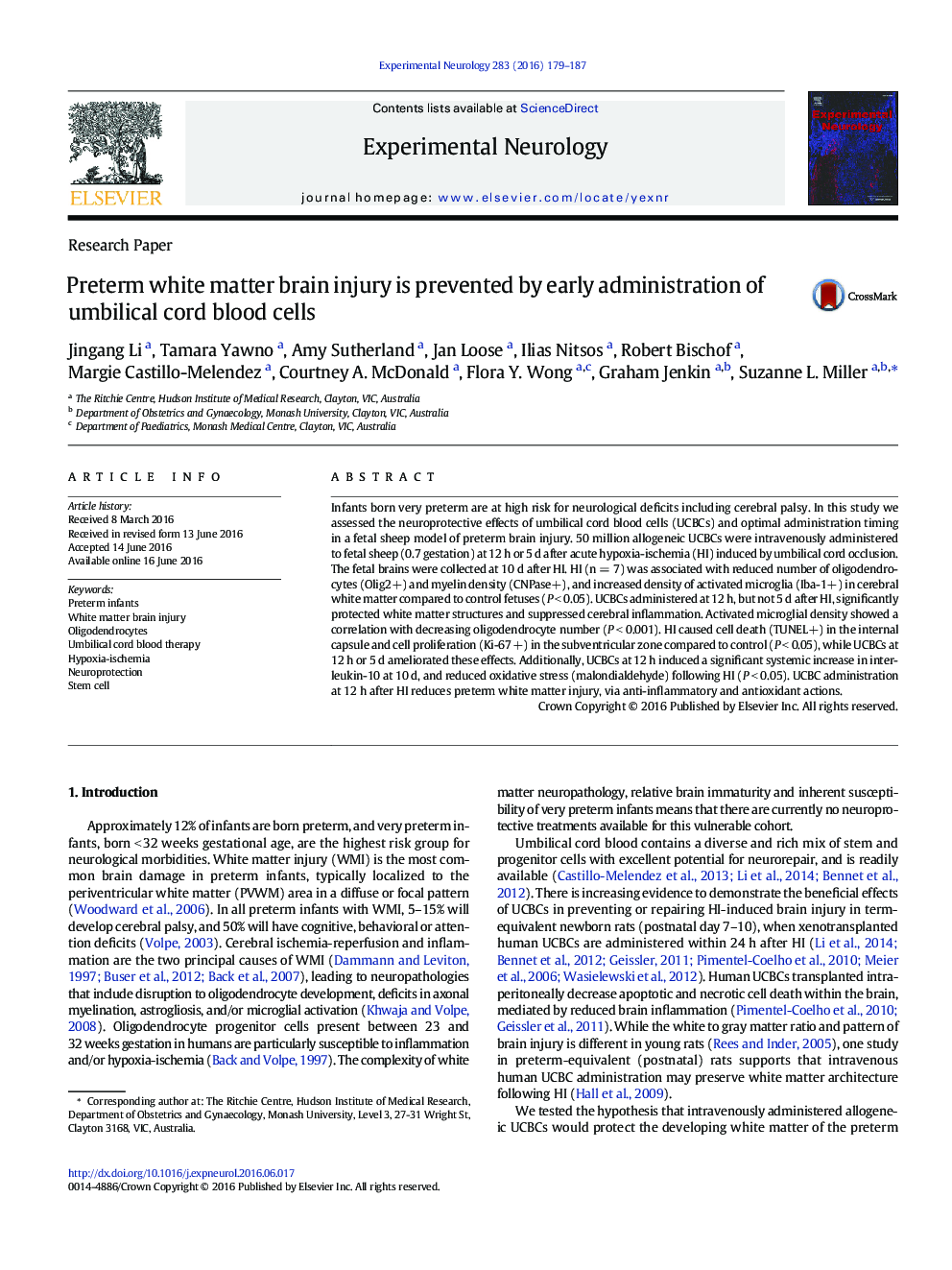| Article ID | Journal | Published Year | Pages | File Type |
|---|---|---|---|---|
| 6016891 | Experimental Neurology | 2016 | 9 Pages |
â¢Early UCB cell administration after HI reduces preterm white matter injury.â¢UCB cells administered at 12 h, but not 5 d, post-HI suppress microglial activation.â¢Neuroprotection by UCB cells is contributed by anti-inflammatory and antioxidant actions.
Infants born very preterm are at high risk for neurological deficits including cerebral palsy. In this study we assessed the neuroprotective effects of umbilical cord blood cells (UCBCs) and optimal administration timing in a fetal sheep model of preterm brain injury. 50 million allogeneic UCBCs were intravenously administered to fetal sheep (0.7 gestation) at 12 h or 5 d after acute hypoxia-ischemia (HI) induced by umbilical cord occlusion. The fetal brains were collected at 10 d after HI. HI (n = 7) was associated with reduced number of oligodendrocytes (Olig2+) and myelin density (CNPase+), and increased density of activated microglia (Iba-1+) in cerebral white matter compared to control fetuses (P < 0.05). UCBCs administered at 12 h, but not 5 d after HI, significantly protected white matter structures and suppressed cerebral inflammation. Activated microglial density showed a correlation with decreasing oligodendrocyte number (P < 0.001). HI caused cell death (TUNEL+) in the internal capsule and cell proliferation (Ki-67 +) in the subventricular zone compared to control (P < 0.05), while UCBCs at 12 h or 5 d ameliorated these effects. Additionally, UCBCs at 12 h induced a significant systemic increase in interleukin-10 at 10 d, and reduced oxidative stress (malondialdehyde) following HI (P < 0.05). UCBC administration at 12 h after HI reduces preterm white matter injury, via anti-inflammatory and antioxidant actions.
